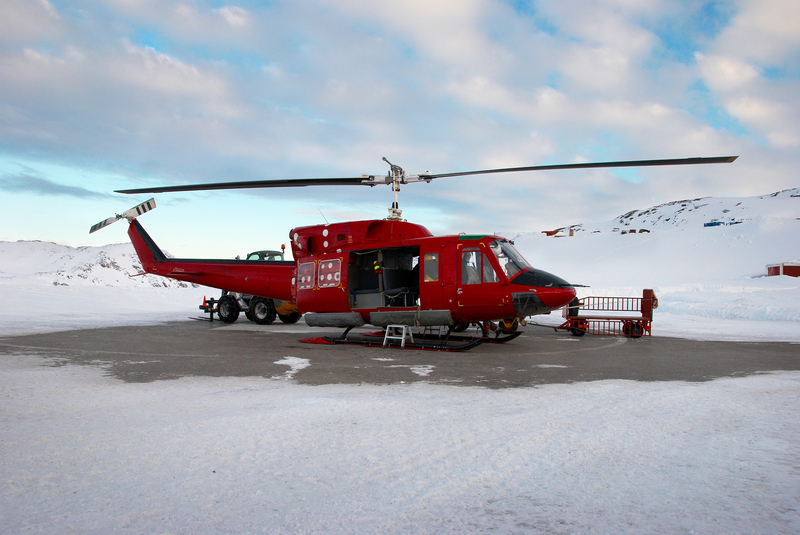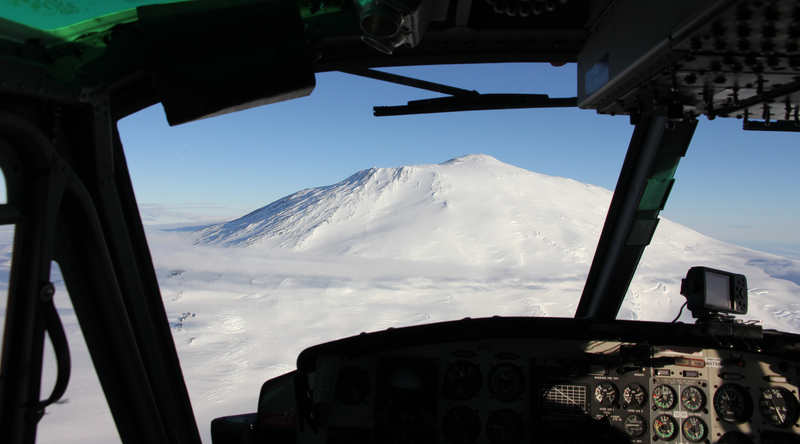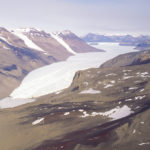Focus on all new content.
-

-

-
Who Are the People of the Prince to Come?
Then after the sixty-two weeks, the Messiah will be cut off and have nothing, and the people of the prince who is to come will destroy the city and the sanctuary.
– Daniel 9:26
The context of the prophecy in Daniel 9 refers to a prince, or ruler, who emerges from the “people” who destroy Jerusalem and the Temple after the Messiah (Jesus Christ) is “cut off” from the people (his death. resurrection, and return to heaven). This leader will make a seven-year covenant with “many.”
Daniel 9:26 must refer to the ravishing of Jerusalem and the Temple Mount by the Roman general Titus in AD 70. The people who destroyed the city and the sanctuary came from the old Roman Empire.
The Prince to Come must rise from the old Roman Empire
The King of Italy, Vittorio Emanuele II, was known as Padre della Patria, the Father of the Fatherland. Built in his honor, the Vittoriano is called the Temple of the Fatherland, or Altare della Patria (literally, the Altar to the Fatherlands). Construction began in 1885, and it was officially inaugurated in 1911. Above the Tomb of the Unknown Soldier stands a statue called the Statue of Goddess Roma.
The temple crowns one of the seven hills of Rome upon which the ancient city was built: Palatine, Capitoline, Quirinal, Viminal, Esquiline, Caelian, and Aventine. The Vittoriano sits upon the Palatine.
Some scholars believe these hills infer Rome’s involvement in Tribulation politics and point to a passage of Scripture in Revelation to validate this theory:
Here is the mind which has wisdom. The seven heads are seven mountains on which the woman sits, and they are seven kings; five have fallen, one is, the other has not yet come; and when he comes, he must remain a little while.
– Revelation 17:9-10
There may be some connection with Rome at the tribulation, but the “mountains” or hills of Revelation 17 refer to seven kingdoms. At the time of John’s vision, five great kingdoms had risen and fallen: Egypt, Assyria, Babylon, Medo-Persia, and Greece. Rome existed at the time, and the kingdom of the Anti-Christ had not yet come.

Greek coin bearing the image of Europa Europa: Symbol of a Continent
Outside the Council Building in Brussels, a metal statue depicts a girl named Europa riding a bull.
In Greek mythology, Europa was a Phoenician maiden (princess) who caught the eye of the Olympian god Zeus. Zeus decided he would have the young woman for himself and hatched a plan to capture her, while keeping his intentions hidden from his jealous wife. The details of the myth vary slightly from storyteller to storyteller, but the general gist of the plot is that he metamorphosed into a white bull and found Europa as she picked flowers while shepherding her father’s flock in a field (or whiling away the hours with her attendants).
Captivated by his gentleness, she approached him and climbed upon his back. Then he kidnapped her, took her to Crete, and ravished her.
The image of Europe riding the bull is an informal symbol of Europe. The Greeks likely gave the region her name, even producing a coin stamped with the image of Europa and the bull. When the Euro was introducing in 2002, an image of Europe and Zeus was again used. Throughout Europe, the myth—and particularly the image—is interlinked with the culture and people. Statues depicting the pair adorn statues placed at governmental buildings. Scholars argue over the importance of the myth to Europe’s development as a society, lending some credence by the very necessity of its exploration.
Some students of Bible prophecy believe it’s possible Europa and the bull have a symbolic association, as well, with the harlot of the Revelation.
Then one of the seven angels who had the seven bowls came and spoke with me, saying, ‘Come here, I will show you the judgment of the great prostitute who sits on many waters, with whom the kings of the earth committed acts of immorality, and those who dwell on the earth were made drunk with the wine of her immorality.’
And he carried me away in the Spirit into a wilderness; and I saw a woman sitting on a scarlet beast, full of blasphemous names, having seven heads and ten horns. The woman was clothed in purple and scarlet, and adorned with gold and precious stones and pearls, having in her hand a gold cup full of abominations and of the unclean things of her immorality, and on her forehead a name was written, a mystery, ‘BABYLON THE GREAT, THE MOTHER OF HARLOTS AND OF THE ABOMINATIONS OF THE EARTH.’
And I saw the woman drunk with the blood of the saints, and with the blood of the witnesses of Jesus. When I saw her, I wondered greatly. And the angel said to me, ‘Why do you wonder? I will tell you the mystery of the woman and of the beast that carries her, which has the seven heads and the ten horns.’
– Revelation 17:1-7

Who is the Harlot?
Revelation 17 describes the beast she rides as the one who will come to deceive the people of the earth, those whose names are not written in the Book of Life. He is the hill (kingdom) yet to come arising from the Roman Empire. John MacArthur notes it was common for Roman prostitutes to wear headbands bearing their names.
This woman of scarlet is commonly thought to represent the false religions of the world who wield power over their worshipers. This is mystery Babylon, whose roots lie in Babel and the world’s efforts to reach heaven without God.
The Anti-Christ, or beast, will carry her with him into power. Eventually, however, he will turn on her, demanding all worship for himself.
Some believe the harlot to be the Vatican. But she more likely represents the entirety of religious systems existing outside the Lordship of Jesus Christ.
A Melding of Religions
Representatives of the three major religions—Judaism, Islam, and Christianity—have conceived the vision for one house of worship in which members of all three religions can meet. Rabbi Andreas Nachama, Imam Kadir Sanci, and Father Gregor Hohberg began the discussion over a decade ago and now have begun work on the center. The charter for House of One was signed October 11, 2011. Plans call for a multi-level archeological center and will house a synagogue, mosque, and church under one roof.
Construction will be at the site of the foundation of the ancient 13th century Petrikirche at Pletiplatz in Berlin-Colln, Germany. The Petrikirche had the highest tower in Berlin before it was torn down by the East German communist government in 1964. Archaeological digs there have also discovered the burials of 3,000 people and the ruins of other churches.
The cornerstone for the House of One was set on May 27, 2021.
Abrahamic Family House
Saadiyat Island in Abu Dhabi, United Arab Emirates, is the site of a complex housing the St. Francis Church, Imam Al-Tayeb Mosque, and Moses Ben Maimon Synagogue. Touted as a pioneering interfaith project in the Arab world, the complex opened March 1, 2023.

Abrahamic Family House Greek Coin: 83381757 © Andrej Safaric | Dreamstime.com
Abrahamic Family House: 274733805 | Abrahamic Family House © Wirestock| Dreamstime.com
Coming next week: In His Own Name
This weekly series follows the story line of the Christian thriller Blood Falls. Each episode occurs in chronological order, giving context, perspective, and Biblical foundation for the novel. Discover the true stories and incredible facts behind the book! See the entire series here: https://cmaddict.com/tag/behind-blood-falls/

-

-

-

-
FOR IMMEDIATE RELEASE — Trampolines has released their latest song and video with “Rise,” a track featuring 1k Phew and cowritten with new artist Zaq Monroe. You can watch the video at https://rockon.ink/3rX7JWl. The song also marks the introduction of Trampolines’ mission-focused label, Radial Music Group.
“We are excited to raise up musicianaries under our new label Radial Music Group, and we will be touring with Zaq Monroe in the new year,” Trampolines’ Lane Terzieff says. “It was fun to co-produce this song with Zaq and break into the trap-meets-tribal beats space!”
Fittingly, “Rise” is an anthem for anyone on the edge of the unknown, eager to be a part of something bigger than themselves.
“In prayer, I asked Jesus to use all of my talents for Him, because life outside of ministry felt empty. I didn’t want to live that way, I wanted my life to be something I could be proud of,” Zaq Monroe adds. “‘Rise’ is for people who have lived in the will of God, and for those who don’t even know who He is but feel the urgency to do something beyond their comfort zone. To stand up and step into a world they could never have imagined. When I met Trampolines, they fit that ideology perfectly. With their focus on missions and putting God first, I knew that they would make the song something special. And I have been a big fan of 1k Phew since I was a teenager.”
Trampolines is an act full of energetic eclecticism who donates 100% of their proceeds to missions work around the world. “Rise” is the latest song that raises funds for evangelism and anti-human trafficking efforts. “Rise” is streaming everywhere now, with the music video premiering exclusively on Rapzilla.
You can learn more about Trampolines’ mission work at laneandcary.com, and book them for an event at faabooking.com/trampolines2023. Find Trampolines on social media on Facebook, Instagram, YouTube, TikTok and Spotify, and Zaq Monroe on Instagram, YouTube and Soundcloud.
###
-
“May the God of hope fill you with all joy and peace as you trust in him, so that you may overflow with hope by the power of the Holy Spirit.” ~Romans 15:13 NIV
#bibleverse #verseoftheday #verse #scripture #bible #hope #joy #peace #trust #jesuschrist
-
The most powerful volcanic eruption in recorded history occurred on April 10, 1815.
After centuries of dormancy, Indonesia’s Mount Tambora erupted with a roar in 1815, belching millions of tons of sulfur into the air. Steam and lesser eruptions occurred for the next six months to three years. The ash and pollution spread across the globe, causing a drop in temperature averaging five degrees. Crops failed around the world. The next year, 1816, was dubbed the Year Without a Summer.
The Year Without a Summer gave us an important new way to travel.
An unforeseen benefit was the development of the bicycle, as feed for horses became too expensive.
This first practical bike was invented by the German baron Karl von Drais in 1817, who patented it in 1818. The so-called Draisine was made of wood, brass, and iron. It had no pedals and was powered by foot, making it hard to steer and control. Due to the resulting accidents, the Draisine was prohibited in some cities.
The concept grew, however, and advances in development and promotion soon propelled the bicycle to new popularity.
Drais’s biographer discovered that the baron’s interest in the bicycle was driven by the necessity to find an alternative mode of transportation following the starvation and death of horses from lack of feed in 1816.

The Doomsday Vault: Preparing for Future Catastrophes
Deep inside a mountain on the remote Arctic island of Spitsbergen, the Svalbard Global Seed Vault safeguards millions of seeds to help feed the nations in the wake of a disaster. Dubbed “Noah’s Ark,” the vault holds over a million seed varieties, with a capacity to store up to 4.5 billion seeds.
The seeds don’t belong to Norway, however. They remain the property of the donor entities and can be withdrawn as necessary. Not just a resource awaiting an apocalypse, the seed vault has been accessed by donors to help restore communities impacted by local catastrophes. The vault in the Norwegian archipelago opened February 26, 2008. The germ of this idea sprouted in 1984 with the storage of seed germplasm in an abandoned coal mine near the city of Longyearbyen, Norway.
By 2004, the concept had blossomed into an international dream of creating a secure facility for the cooperative use by the nations.
The storage of genetically modified seeds at the vault is prohibited by Norwegian law.
Coming next week: The People of the Prince to Come
This weekly series follows the story line of the Christian thriller Blood Falls. Each episode occurs in chronological order, giving context, perspective, and Biblical foundation for the novel. Discover the true stories and incredible facts behind the book! See the entire series here: https://cmaddict.com/tag/behind-blood-falls/

-
It takes heavy-duty machines to traverse The Frozen Continent.
Most travel to and from Antarctica and between stations there is by plane.

An Air Force C-17 Globemaster III Air Force C-17 Globemaster III
The U.S. Air Force charters C-17 transports between Christchurch, New Zealand, and McMurdo Station for the U.S. Antarctic Program. These hulking workhorses boast four Pratt and Whitney turbofan engines and have a maximum carrying capacity of 170,900 pounds (77,519 kilograms). They carry most of the cargo and personnel during Antarctica’s austral season.
Each plane can carry 102 troops/paratroops, 36 litter and 54 ambulatory patients with their attendants, or a full capacity of cargo.
They land and take-off from the annual sea-ice runway near McMurdo Station, where the ice must be at least 6 and ½ feet (about 2 meters) thick to support the jets. According to the Air Force website, the two outstanding features of the C-17 are its reliability and maintainability.

Christchurch/New Zealand – February 24, 2018: Lockheed LC-130 Hercules ski-equipped cargo plane LC-130 Hercules “skibird”
Passengers and cargo shuttle back and forth between the South Pole and McMurdo Station via the LC-130 Hercules.
There are only about ten LC-130 Hercules planes in existence. Built in the 1950’s during the
Cold War to combat the Soviet Union in the Arctic, they have been repurposed to serve as transport and resupply planes in the Antarctic. They have been ski-equipped, giving them the nickname “skibird.”

The view of Antarctica from a LC-130 Hercules Bell 212

A Bell 212 The “Puckered Penguins” were a thing.
The Puckered Penguins was the nickname of Antarctic Development Squadron Six, also known as VXE-6 or ANTARCTIC DEVRON SIX. First established on January 17, 1955, as Air Development Squadron Six (VX-6), the program supported the continuing operations of Operation Deep Freeze of the United States Antarctic Program.VX-6 completed exploratory missions, transported people and materials essential for the establishment of stations in the Antarctic, and conducted emergency evacuations.
A cartoon character drawn by Lieutenant Commander Ray E. Hall of the US Navy and dubbed “Puckered Pete” became the unofficial mascot of the VX-6 Squadron.
The squadron was redesignated Antarctic Development Squadron Six (VXE-6) on January 1, 1969. The new insignia sported a bright blue-and-gold patch featuring symbols of the Antarctic continent: a plane, helicopter, and a penguin. The insignia also bore these words:
OPERATION DEEPFREEZE
COURAGE SACRIFICE DEVOTION
ANTARCTICDEVRONSIX
The Puckered Penguins logged more than two hundred thousand flight hours in support of the Antarctic Program before being disestablished on February 24, 1999. During their existence, they supported the pioneering work of the US Antarctic Program by risking their lives to transport 195,000 passengers, as well as deliver over 240 million pounds of dry cargo and millions of gallons of fuel to Antarctica.

A view of Mt. Erebus from a Bell 212 helicopter Ivan the Terra Bus

Ivan the Terra Bus sits on the ice near an LC-130 Hercules transport plane. The monster van known as Ivan the Terra Bus is an invaluable mode of transportation for passengers arriving and leaving McMurdo Station via military flights. The tires along on this giant are nearly as high as a man.
Coming next week: The Year Without a Summer
Photo 115010297 © Michaelfitzsimmons | Dreamstime.com
Stock Photo ID: 1288314316 ©William Cushman|Shutterstock.com
Photo 82320466 © Martyn Unsworth | Dreamstime.com
ID4874438 © Anouk Stricher | Dreamstime.com
Photo 243267627 © Martyn Unsworth | Dreamstime.com
Photo 73752944 © Martyn Unsworth | Dreamstime.com
This weekly series follows the story line of the Christian thriller Blood Falls. Each episode occurs in chronological order, giving context, perspective, and Biblical foundation for the novel. Discover the true stories and incredible facts behind the book! See the entire series here: https://cmaddict.com/tag/behind-blood-falls/

-
SENOIA, GA JULY 14, 2023 – Since releasing his solo debut The Blessing in the spring of 2007, John Waller has been releasing albums and singles full of inspiring and uplifting messages. Having released 6 studio records and other projects over the last 16 years, It’s pretty apparent with songs like “While I’m Waiting”, “As For Me and My House” and “Crazy Faith”, Waller enjoys writing about the stories about his journey of life, intertwining his faith in Jesus and complete trust that through Him, everything will fall into place.
Even with placement of the aforementioned songs in major motion pictures, John would often times be left in a place where he questioned “Is music still my calling? In times, he refers to as ‘seasons’, this has been the question. But, time after time, just when he thinks his last song might truly be his last song, God inspires him to continue on that journey of writing heart-felt, honest and worshipful tunes to inspire the Church. That’s where his latest song “Yeshua” (The Name)” comes into play. Taking inspiration from the living and breathing and words found in God’s Word, the new single aims to just point people to the Name of above all names, Jesus, instead taking on His Hebrew-given name of “Yeshua” or יֵשׁוּעַ as it is written in the original Hebrew.
Although Waller has had many collaborators on songs over the years including Casting Crowns’ Mark Hall; 7eventh Time Down’s Mikey Howard and even laying down vocals on a track with hip-hop artist Canton Jones, “Yeshua (The Name)” brings in a vocalist into the mix even closer than the others with his own 17-year-old daughter, Sophee.
Others are praising the song as well…
“Sophee’s beautiful vocals add to the song in a way that I really think compliments John’s” Jay Heilman, of Today’s Christian Entertainment says. “Not only is it a powerful and uplifting track pointing people to Jesus, but the father-daughter duet just make it all the more special.”
Fellow artist and Georgia-native Jason Fowler says “John Waller continues to shine the light of Jesus with his brand new song “Yeshua (The Name)” featuring his daughter Sophee, they proclaim the Name above every name with beautiful harmonies and a sound sure to bring joy to all who listen.”
The song had even caught the attention of legendary former Kansas vocalist John Elefante, who says “How can you not like lyrics like this? That’s so praiseworthy!”
WGTS 91.9 FM (Washington, DC)’s Mercedes Rich says “Cinematic! A great blend of worship and contemporary Christian styles! Beautiful vocals!“
The new single can be purchased now where digital music is sold and you can see the music video below. For more information about John Waller, check him out on social media on Facebook, Instagram and TikTok!
Courtesy of Today’s Christian Entertainment

-

-

-

-

-
Not all of Antarctica is covered with snow and ice.
The McMurdo Dry Valleys lie west of McMurdo Sound and are considered one of the world’s most extreme deserts. The area features rocky terrain marked by low humidity and little snow or ice. These conditions are largely a result of the fierce katabatic winds that can reach speeds of 200 miles per hour, evaporating the moisture in the air or on land. The summer glacial melt creates small freshwater streams that feed the saline lakes.
The Dry Valleys were once the site of teeming life.
Researchers in the Dry Valleys of Antarctica have discovered previously unknown fossil sites revealing a much different continent in the distant past. One such site has yielded multiple layers of soil containing fossils of wood, leaves, mosses, seeds, spores, and even insects.
Due to its placement in the Southern Hemisphere, Antarctica has drastically different seasons than most of the world. Summer runs from October to March and is called the austral season. During this time, the days get longer and longer until the sun doesn’t set at all, giving the Frozen Continent yet another nickname: Land of the Midnight Sun.
The other season is winter, which runs from March to October.

McMurdo Station as seen from Observation Hill. Mount Erebus can be seen at the skyline. McMurdo Station sits at the southernmost point of the volcanic rock known as Ross Island and serves as the gateway for most scientific and tourist ventures. Its easy access to McMurdo Sound allows the continent to have supplies shipped in during the austral season. Personnel and supplies are flown into McMurdo from Christchurch via military transport planes as weather permits. Flights are suspended during the winter months because the cold turns the plane’s fuel into jelly. Resupply flights resume in August. During the austral season, McMurdo Station has a population of over 1,000 people. A small crew stays to maintain operations during the long winter of darkness.
The island began its role as a supply point in 1904, when polar explorer Robert Falcon Scott left a hut with provisions nearby on what is now Hut Point during his ill-fated expedition.
The station was officially founded as a temporary naval base for scientists in 1955. With its seaport and runways, it served as a logistics base for the construction of the research facility at the South Pole during the International Geophysical Year of 1957-1958. The U.S. Antarctic program of the National Science Foundation took over the base in 1961 and developed it into a research and logistics station.
In the novel Blood Falls, a woman serves as McMurdo’s station manager. Has a woman ever held that job in Antarctica?
There have been several brave women who served as station managers in the rugged Antarctic.
History was made in 1994 when all three of the stations under the flag of the United States were manned by female station managers: Janet Phillips at Amundsen-Scott Station, Karen Schwall at McMurdo Station, and Ann Peoples at Palmer Station.
Karen Schwall was the first female U.S. Army officer in Antarctica and the first woman to manage McMurdo Station. She served as manager first from October-December 1994 and again from February-August 1995. She was promoted to Major while on inactive reserve in 1995.
Ann Peoples, an archeologist with the Bureau of Land Management, began her work with the US Antarctic Program in 1981. She held several positions in the Antarctic and received recognition for her work as the Berg Field Center manager from 1986-1989. She became the first woman to manage Palmer Station and served there from 1991-1995. Peoples Rocks on Anvers Island, where Palmer Station sits, was named after her.
Janet Phillips went to Antarctica as a mechanical engineer in 1991. She spent several years at the Amundsen-Scott South Pole Station and became the station manager there for the 1993-1994 season.
Coming next week: Navigating an Alien World
Photo 229806520 |Dry Valley Antarctica © Johncarnemolla | Dreamstime.com
Photo 73139159 / Antarctica © Martyn Unsworth | Dreamstime.com
This weekly series follows the story line of the Christian thriller Blood Falls. Each episode occurs in chronological order, giving context, perspective, and Biblical foundation for the novel. Discover the true stories and incredible facts behind the book! See the entire series here: https://cmaddict.com/tag/behind-blood-falls/

-

-

-


![for KING + COUNTRY – WHAT ARE WE WAITING FOR? [the single] Official Music Video](https://cmaddict.com/wp-content/uploads/2023/08/Screenshot-2023-08-11-073236-150x150.jpg)
![NEEDTOBREATHE – “Hideaway” [Official Audio]](https://cmaddict.com/wp-content/uploads/2023/08/Screenshot-2023-08-11-072624-150x150.jpg)


![Switchfoot – Meant To Live (Jon Bellion Version) [Official Music Video]](https://cmaddict.com/wp-content/uploads/2023/08/Screenshot-2023-08-07-122458-150x150.jpg)









![Switchfoot – Meant To Live (Jon Bellion Version) [Official Visualizer]](https://cmaddict.com/wp-content/uploads/2023/07/Screenshot-2023-07-21-080606-150x150.jpg)






